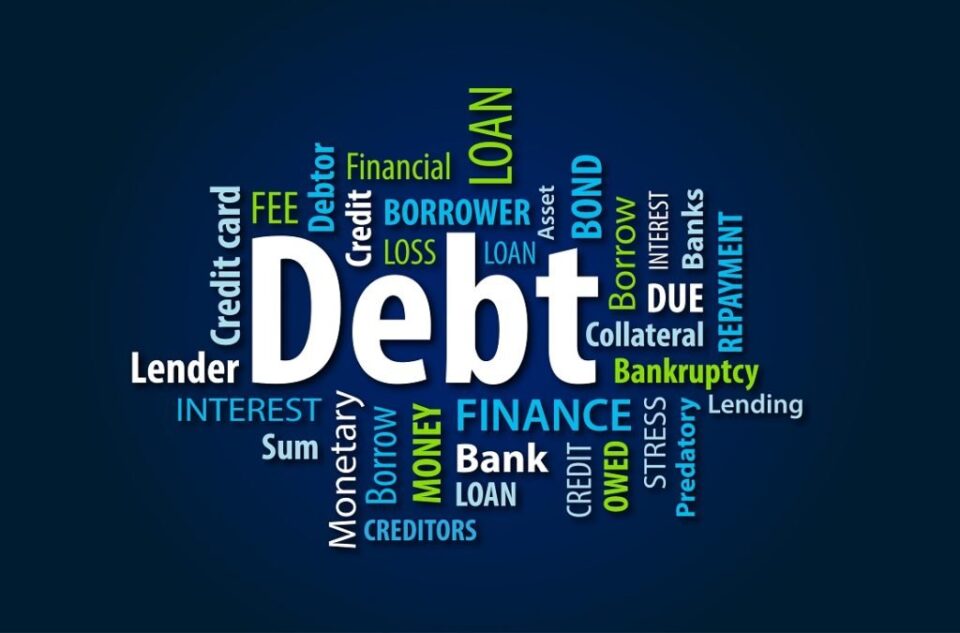A major lasting damage Prime Minister Prayut Chan-o-cha will eventually leave behind is his government’s co-optation and capture of autonomous agencies that used to safeguard and uphold Thailand’s macroeconomic well-being and political level-playing field.
As these monitoring and watchdog agencies become inert and ineffective, the Prayut government has had a field day running up Thailand’s debt burden no end and running the country into the ground in the process, leaving future generations to pick up the pieces and pay for the runaway debt.
The parliamentary passage this week of a royal decree to borrow 500 billion baht for pandemic mitigation is a case in point.
On top of the similar 1-trillion-baht package last year, this new debt comes on top of the government’s deficit spending packages in 2019 and 2020 of 683 billion baht and 623 billion baht, respectively.
The proposed fiscal year 2022 budget of 3.1 trillion baht will also incur another 700 billion baht of deficit spending.
In other words, it will be another year when government expenditures will amount to a lot more than tax revenues.
Understandably, these are extraordinarily tough pandemic times.
All countries have had to resort to fiscal purse-strings and pump-priming to provide safety nets and shore up demand in the face of the ravages of Covid-19. However, Thailand’s debt profile has been eroding steadily since Gen Prayut seized power in the May 2014 military coup.
His government’s fiscal profligacy predates the pandemic by years.
According to data from the Public Debt Management Office (PDMO), from 2014 to 2019, the Prayut-led governments, first under the junta regime and then under coalition rule after the March 2019 election, borrowed 356 billion baht on an annual average.
In the 2016-17 fiscal year, its overspending peaked at 567 billion baht. But as a proportion of GDP, public debt during this five-year period rose to 57%, still under the 60% limit mandated under the State’s Monetary and Fiscal Policy Discipline Act of 2018.
This new law was enacted partly in response to the growing debt burden under Prime Minister Prayut’s helm.
Thus it is clear that a huge debt load was piling up well before the pandemic arrived in early 2020.
Government borrowing for productive investments and necessary welfare is acceptable as long as there are eventual benefits to revenue and income, enabling debt sustainability and potentially returning to balanced budgets in the longer term.
But the Prayut government has been overspending year in and year out without clear prospects for economic growth and increased revenue on the horizon.
It took a lot of fiscal discipline and budget conservatism in the past to keep public debt traditionally low. This gave Gen Prayut a lot of fiscal space to abuse when he came to office.
Together with the 1-trillion-baht loan last year, the new pandemic package of 500 billion baht is on course to exceed the 60% ceiling of GDP.
Compared to the United States’ 100% or Japan’s 250%, Thailand debt to GDP would seem manageable even if it goes above 60%. But this is not the point.
Thailand’s runaway debt under Gen Prayut should be viewed in its own fiscal context.
How come previous governments of all civilian and military stripes and macroeconomic policy agencies were able to keep debt down and growth up when the Prayut administration is piling up fiscal liabilities with no clear prospects for economic expansion?
And there are additional risks from this mounting debt stockpile.
The interest payments from the budget to sustain the debt can increase sharply under exogenous circumstances.
The currently low interest rate landscape around the world could change precipitously if inflationary threats reappear.
Thai budgets in the near future will be increasingly squeezed as more allotments will be earmarked to repay the debt, crowding out needed investments and expenditures.
In this environment of rising debt, subdued growth and blatant economic mismanagement, the traditional warnings from macro-policy institutions are nowhere to be heard.
The head of the PDMO has made excuses for the government on pandemic grounds, even though debt risks have worsened since the coup.
Other macro-policy agencies that used to constitute Thailand’s once-vaunted macroeconomic technocracy from the Fiscal Policy Office and the Budget Bureau to the National Economic and Social Development Council have been conspicuously silent, putting their institutional autonomy in question.
Above all, the Bank of Thailand traditionally would lead in sounding alarm bells in dire macroeconomic times.
But Thailand’s central bank, the structural anchor of macroeconomic management since the 1950s (except a blip in the 1990s economic crisis), has been passive and reactive.
It is an uncomfortable truth to note that the current central bank governor is a former adviser in the economic team of the prime minister and a late candidate for the job who applied last minute after the first deadline had passed and was extended.
When macro-policy agencies do not perform their signalling and scrutinising functions, the government’s economic policy abuses and excesses are easier to come by.
Even more private and prominent policy bodies, such as the Thailand Development Research Institute, have gone rather quiet.
The TDRI did so much and so well to research, analyse and expose the miscalculated and mismanaged rice-pledging scheme of the previous Yingluck Shinawatra government.
Why do its august economists and researchers appear tame and timid in the face of the Prayut government’s policy flaws and shortcomings?
The Prayut government is leaving a massive bill for younger Thais to repay over their lifetimes.
No wonder they have been upset and took to the streets last year.
When they make their voices heard again to reclaim the future they have lost, let it be known that the sources of their rage are not some external agents but home-grown from under the boots of Gen Prayut and his ilk.
THITINAN PONGSUDHIRAK
A PROFESSOR AT CHULALONGKORN UNIVERSITY




